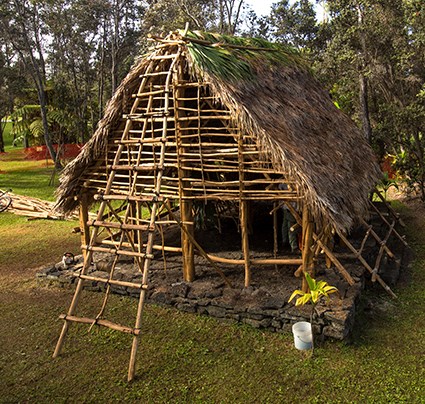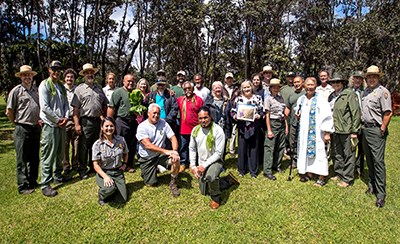
NPS Photo/J. Wei The Hale Built over the course of the summer of 2019 with the help of numerous partners and volunteers, the hale is a reminder of the cultural significance of the Kīlauea summit area. The building came to life using traditional labor methods with the aid of modern tools. The wooden structure consists of non-native trees— ironwood and kiawe. Incorporating traditional ʻōhiʻa wood posts could have moved fungal pathogens, namely Rapid Ōhiʻa Death, to non-infected trees in the National Park. The hale base, constructed by master builder and former park employee Larry Kuamo'o, is made of slabs of lava rock, while the main structural posts sit on pōhaku (large river stone). 'Ili'ili (water-worn pebbles) finish the interior floor. The roof is made of thatched fronds from loulu, palm trees with fan-shaped leaves. Though few people ever lived directly on the rim of Kīlauea, one of the most active volcanoes on earth, the hale illustrates what traditional life may have looked like elsewhere in Hawai'i Volcanoes National Park and the island of Hawaiʻi. The completed structure allows for further cultural discussion, a place to learn Hawaiian arts and crafts, and opportunities for hālau hula groups to prepare before performing traditional hula on the nearby Kahua hula platform. 
ʻAʻohe ke hana nui ke alu ʻia
|
Last updated: February 18, 2021

